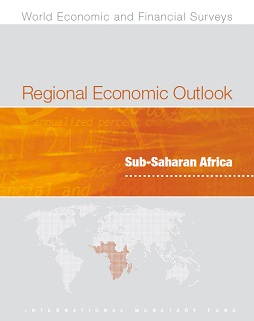
Sub-Saharan Africa
Regional Economic Outlook: Capital Flows and The Future of Work
October 2018
Full Text Country Focus Podcast
Background Paper and Expanded
Statistical Appendix Tables
The macroeconomic outlook for sub-Saharan Africa continues to strengthen. Growth is expected to increase from 2.7 percent in 2017 to 3.1 percent in 2018, reflecting domestic policy adjustments and a supportive external environment, including continued steady growth in the global economy, higher commodity prices, and accommodative external financing conditions. While fiscal imbalances are being contained in many countries, the adjustment has typically occurred through a combination of higher commodity revenues and sharp cuts in capital spending, with little progress on domestic revenue mobilization. Over the medium term, and on current policies, growth is expected to accelerate to about 4 percent, too low to absorb the likely flow of new entrants into labor markets. The outlook is surrounded by significant downside risks, particularly considering the elevated policy uncertainty in the global economy. Shielding the recovery and raising medium-term growth would require reducing debt vulnerabilities and creating fiscal space through more progress on domestic revenue mobilization, and policies to achieve strong sustainable and inclusive growth.
Chapter 1 - Recovery and Rising Risks
TextMacroeconomic outcomes in sub-Saharan Africa continue to strengthen, reflecting domestic policy adjustments and a supportive external environment, including continued steady growth in the global economy, higher commodity prices, and accommodative external financing conditions. Growth is expected to increase from 2.7 percent in 2017 to 3.1 percent in 2018; inflation is abating; and fiscal imbalances are being contained in many countries.
Chapter 2 - Capital Flows to Sub-Saharan Africa: Causes and Consequences
TextIn the aftermath of the global financial crisis, there has been a spectacular increase in nonofficial cross-border capital flows to sub-Saharan Africa. With official development assistance to the region on a declining trend, these flows could provide much-needed financing for development initiatives and boost economic growth and welfare. However, large inflows could also pose macroeconomic and financial stability challenges such as economic overheating, currency overvaluation, and unsustainable domestic credit and asset price booms. In the absence of adequate fiscal and macroprudential frameworks, inflows may also encourage excessive borrowing by the public and private sectors, and exacerbate currency, maturity, and capital structure mismatches on balance sheets—leaving countries vulnerable to a sudden reversal of capital flows that may be triggered by factors extraneous to the recipient economy.
Chapter 3 - The Future of Work in Sub-Saharan Africa
TextThe current wave of technological advances is set to shake up the landscape for jobs within countries and across the world. Previous periods of technological change have led to higher living standards, but transition periods were marked by fears over the future of work as existing jobs were made obsolete and it took time for new and different jobs to arise. Today again, there are fears that the Fourth Industrial Revolution will be disruptive, as technology replaces workers, possibly leading to lower income shares and rising inequality. While most countries are facing this wave of technological change at a time of declining working populations—and are keen to embrace the opportunity to sustain or increase output levels with fewer workers—the challenge for sub-Saharan Africa, where working populations continue to grow rapidly, is very different.


